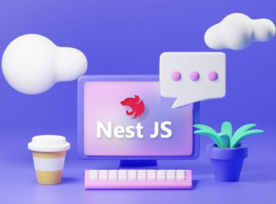In the pursuit of creating inclusive environments, customizable settings emerge as a powerful tool within the realm of universal design. By recognizing and accommodating individual preferences and needs, customizable settings pave the way for a more personalized and accessible world. In this blog post, we delve into the transformative impact of customizable settings in various […]
User Experience (UX)
Multi-Modal Interfaces: A Gateway to Inclusive Universal Design
In the pursuit of inclusivity, the realm of universal design constantly evolves, seeking innovative solutions to accommodate diverse needs. One such frontier is the integration of multi-modal interfaces—a revolutionary approach that recognizes and caters to various modes of interaction. This blog post explores the transformative potential of multi-modal interfaces in achieving a more universally designed […]
Opening Doors to Inclusion: Universal Design in Public Spaces
In the quest for a more inclusive society, the significance of universal design in public spaces cannot be overstated. By incorporating thoughtful features, such as ramps, elevators, and automatic doors, we can break down physical barriers and create environments that cater to the diverse needs of individuals, especially those facing mobility challenges. This blog […]
Breaking Down Barriers – Creating Inclusive Public Spaces Through Universal Design
In our rapidly evolving world, the importance of inclusive public spaces cannot be overstated. Designing spaces that are accessible to everyone, regardless of their abilities or disabilities, is at the core of universal design. This concept aims to break down barriers and create environments that promote equal participation for all. In this blog post, we’ll […]
Understanding the Shadow DOM in Web Components
Managing the structure and styling of components in web development may frequently become complex, particularly when working on large-scale projects with several developers or integrating third-party components. Because CSS is global, there is a chance for CSS conflicts and accidental styling changes, a common issue for developers. Here’s where the Shadow DOM comes in as […]
Size and Space for Approach and Use: Designing for Diversity-Universal Design Principle Series-7
Welcome back to our Universal Design Principle Series! In this last edition about Universal design, we explore the principle of “Size and Space for Approach and Use,” a foundational concept that emphasizes the importance of providing appropriate dimensions to accommodate users of diverse sizes, postures, and mobility levels. Join us as we unravel the significance […]
CSS Revolution: Empowering Your Web Design with React Magic
Styling plays a fundamental role in web development. Furthermore, when you embark on building React applications, you can choose from various approaches to skillfully manage styles and CSS. This comprehensive guide will explore diverse techniques, tools, and best practices for styling React components using JavaScript. Different Approaches to Styling in React In the expansive realm […]
Build Scalable and Reliable Node.js Apps with Ease: Introducing Nest JS
If you’re interested in learning a robust, efficient, and scalable enterprise-level server-side framework, you’ve landed on the right blog! 🚀 We’ll start with a quick introduction, and in this post and the ones to follow, we’ll dive straight into the practical part. We’ll build an application that covers various Nest JS fundamental and advanced topics […]
Perceptible Information: Communicating Across All Senses – Universal Design Principle Series -4
Welcome back to our Universal Design Principle Series! In this installment, we turn our attention to the principle of “Perceptible Information,” a guiding principle that emphasizes effective communication for users, regardless of their sensory abilities. Join us as we explore the significance of making information accessible through various modalities, fostering inclusivity in design. Understanding Perceptible […]
Simple and Intuitive Use: Friendly Designs-Universal Design Principle Series-3
Welcome back to our Universal Design Principle Series! In this edition, we dive into the principle of “Simple and Intuitive Use,” a cornerstone in the quest for inclusive design. Join us as we explore the significance of simplicity in creating user-friendly products and environments that can be easily understood and utilized by individuals of diverse […]
Part-2 Next.js Parallel Routing for Unique Loading and Error Experiences
Parallel Routing with Loading: Imagine visiting a website, and while a page is loading, you see a spinning wheel or a loading symbol. That’s the loading state – it shows that things are still getting ready. In Next.js, using Parallel Routing, each webpage can have its own unique loading symbol or message. So, as you […]
Equitable Use: Inclusive Design – Universal Design Principle Series – 1
Welcome to the first installment of our Universal Design Principle Series. Today, we embark on a journey of exploration and understanding, starting with the foundational principle of Equitable Use. Join us as we delve into the essence of inclusive design, unraveling the principles that pave the way for a world that caters to the needs […]











